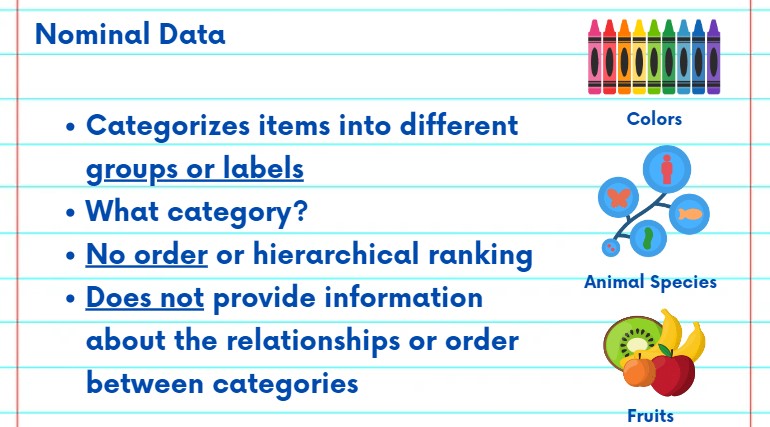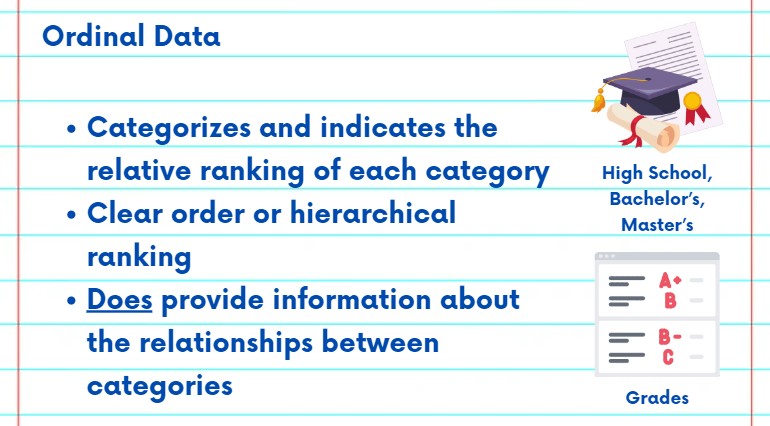This NSDC Data Science Flashcards series will teach you about the different kinds of data, including how you can use them to strengthen your research. This installment of the NSDC Data Science Flashcards series was created by Varalika Mahajan. Recordings were done by Sneha Dahiya. You can find these videos on the NEBDHub Youtube channel.
We’re diving into the fascinating world of data and exploring two essential categories of data: Nominal and Ordinal. The distinction between nominal and ordinal data is essential to understanding how we categorize and order information.

Let’s start with Nominal data. Nominal data simply categorizes items into different groups or labels. It’s all about ‘what category’ something belongs to.
Think of colors, animal species, or types of fruit. These categories have no inherent order or hierarchical ranking; they’re just labels. Nominal data is incredibly useful for classifying and organizing information, but it doesn’t provide any information about the relationships or order between categories.

Now, let’s shift our focus to Ordinal data. Ordinal data, on the other hand, does have a specific order or ranking among its categories. An excellent example of Ordinal data is education levels, where ‘high school’ comes before ‘bachelor’s,’ which comes before ‘master’s.’ The order matters.
Unlike Nominal data, Ordinal data not only categorizes but also indicates the relative position or ranking of each category.”
Both Nominal and Ordinal data have practical applications. Nominal data is useful for classifying things into distinct groups, like in market research to segment customers by gender or in biology to categorize species.
On the other hand, Ordinal data is invaluable in situations where there’s a clear hierarchy or ranking, like in surveys where respondents rate their satisfaction from ‘very dissatisfied’ to ‘very satisfied.

Understanding the difference between Nominal and Ordinal data is essential for proper data analysis. Nominal data categorizes without an inherent order, while Ordinal data adds the valuable element of ranking or order.
So that is all for today. Thank you all for watching and follow along with the rest of the NSDC video series to learn more.
Please follow along with the rest of the NSDC Data Science Flashcard series to learn more about data science ethics.
